 The global economy is increasingly shaped by geopolitical tension, economic nationalism, and tit-for-tat tariff battles. A dramatic example of this is unfolding between the United States and China. In 2025, the U.S. clarified that tariffs on Chinese imports have surged to 145%, triggering a retaliatory move from China’s Ministry of Finance, which imposed counter-tariffs ranging from 84% to 125% on American goods. This unprecedented escalation isn’t just a political gesture—it has real economic consequences, pushing trade relations to the brink of paralysis.
The global economy is increasingly shaped by geopolitical tension, economic nationalism, and tit-for-tat tariff battles. A dramatic example of this is unfolding between the United States and China. In 2025, the U.S. clarified that tariffs on Chinese imports have surged to 145%, triggering a retaliatory move from China’s Ministry of Finance, which imposed counter-tariffs ranging from 84% to 125% on American goods. This unprecedented escalation isn’t just a political gesture—it has real economic consequences, pushing trade relations to the brink of paralysis.
This article explores what happens when tariffs become so high that nations effectively stop buying from each other. We analyze the breaking point in international trade, and what this means for consumers, distributors, and the future of global economic interdependence.
The Breaking Point of Trade: When Tariffs Surpass 100%
When tariffs exceed the 100% mark, the cost of imported goods can double or more—making them financially unviable for businesses and consumers alike. These elevated rates serve not as a protective mechanism, but rather as a de facto trade blockade. Here’s why:
-
Price Inelasticity Becomes Irrelevant: Even goods with inelastic demand (e.g., certain pharmaceuticals or agricultural products) become too costly to justify import.
-
Elastic Goods Disappear First: Products with elastic demand (like electronics or clothing) see a sharp drop in sales as cheaper alternatives flood the market.
-
Trade Volume Plummets: High tariffs disincentivize bilateral trade, reducing both import and export volumes dramatically.
-
Supply Chain Disruption: Importers and exporters scramble to reconfigure supply chains—often at great logistical and financial cost.
Impact on Global Supply Chains and Distributors
High tariffs create immediate pressure on distributors, particularly those relying on cross-border sourcing. The pricing model for distributors is built on predictable margins, but when tariffs spike:
-
Cost Absorption is limited, leading to increased prices for end consumers.
-
Profit Margins Compress, especially for goods with capped retail prices.
-
Inventory Risk Grows as previously imported goods become unsellable or obsolete.
-
Sourcing Strategies Shift toward regional diversification or nearshoring.
In many cases, domestic manufacturers benefit in the short term, but long-term productivity and innovation suffer due to decreased global competition and limited access to raw materials or components.
The Consumer Backlash: Price Shock and Product Scarcity
For consumers, this trade rupture is felt in higher prices, reduced product variety, and longer lead times. Where substitutes are available, consumers shift. But in categories where American or Chinese products dominate (e.g., high-end electronics or agricultural commodities), scarcity becomes a real concern.
This leads to:
-
Reduced consumer confidence and spending.
-
Inflationary pressure in sectors heavily reliant on imports.
-
Black markets or gray imports, especially for luxury or tech items.
Rewriting Global Trade Norms: From Interdependence to Isolation
For decades, globalization has hinged on the assumption that nations will act rationally and cooperatively in trade. These escalating tariffs challenge that premise. We’re now witnessing a transition from mutual interdependence to strategic decoupling.
Key outcomes include:
-
Trade Alliances Recalibrated: Nations explore new trade partners, bypassing traditional power blocs.
-
Emergence of Regional Blocs: Regional trade agreements (like RCEP or USMCA) gain renewed importance.
-
Nationalistic Policies Rise: Tariff wars fuel domestic protectionism, impacting free trade ideologies.
Conclusion: A Defining Moment for Global Commerce
The current standoff between China and the U.S. illustrates a stark new reality: tariffs at extreme levels are not merely instruments of trade policy—they are economic weapons capable of reshaping global supply chains, distorting market dynamics, and triggering inflationary waves across economies. What was once a tool for promoting fair competition has evolved into a mechanism for economic brinkmanship.
As these two global superpowers harden their stances, the effects ripple far beyond their borders. Businesses must now contend with unprecedented volatility, while consumers face rising costs and shrinking product choices. Meanwhile, governments are forced to recalibrate their trade alliances and economic forecasts in light of the shifting geopolitical landscape.
This is more than a trade war. It’s a redefinition of globalization itself—a pivotal moment where the foundational principles of open markets, comparative advantage, and global interdependence are being called into question.
Implications for Global Stakeholders
-
Policymakers must adopt more resilient and flexible trade frameworks, including bilateral agreements and regional trade pacts that reduce dependency on volatile relationships.
-
Corporate leaders must accelerate diversification of suppliers and manufacturing bases, moving toward multi-regional production models to insulate against trade shocks.
-
Distributors and retailers need to revisit pricing strategies, inventory management, and sourcing channels, preparing for both short-term disruptions and long-term structural changes in supply chains.
-
Consumers, increasingly aware of the geopolitical implications of their purchases, may demand greater transparency and value assurance from brands.
The Dawgen Global Perspective
At Dawgen Global, we believe this moment calls for a strategic rethink of how businesses operate across borders. The old playbook—based on cost-efficiency alone—must give way to a new model focused on resilience, agility, and geopolitical risk management. Trade flows, once considered stable and reliable, now require contingency planning, scenario modeling, and intelligent forecasting to maintain competitiveness.
This defining moment in global commerce presents both challenge and opportunity. The firms and nations that emerge strongest will be those that recognize the era of “business as usual” is over—and take bold, informed steps toward a new paradigm of trade strategy.
Next Step!
“Embrace BIG FIRM capabilities without the big firm price at Dawgen Global, your committed partner in carving a pathway to continual progress in the vibrant Caribbean region. Our integrated, multidisciplinary approach is finely tuned to address the unique intricacies and lucrative prospects that the region has to offer. Offering a rich array of services, including audit, accounting, tax, IT, HR, risk management, and more, we facilitate smarter and more effective decisions that set the stage for unprecedented triumphs. Let’s collaborate and craft a future where every decision is a steppingstone to greater success. Reach out to explore a partnership that promises not just growth but a future beaming with opportunities and achievements.
✉️ Email: [email protected] 🌐 Visit: Dawgen Global Website
📞 Caribbean Office: +1876-6655926 / 876-9293670/876-9265210 📲 WhatsApp Global: +1 876 5544445
📞 USA Office: 855-354-2447
Join hands with Dawgen Global. Together, let’s venture into a future brimming with opportunities and achievements

